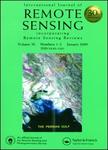版权所有:内蒙古大学图书馆 技术提供:维普资讯• 智图
内蒙古自治区呼和浩特市赛罕区大学西街235号 邮编: 010021

作者机构:Seoul Natl Univ Res Inst Agr & Life Sci Seoul South Korea Seoul Natl Univ Interdisciplinary Program Landscape Architecture Seoul South Korea Seoul Natl Univ Grad Sch Environm Studies Dept Landscape Architecture Seoul South Korea Seoul Natl Univ Coll Agr Life Sci Dept Landscape Architecture & Rural Syst Engn Seoul South Korea
出 版 物:《INTERNATIONAL JOURNAL OF REMOTE SENSING》 (国际遥感杂志)
年 卷 期:2016年第37卷第5期
页 面:1069-1088页
核心收录:
学科分类:083002[工学-环境工程] 0830[工学-环境科学与工程(可授工学、理学、农学学位)] 1002[医学-临床医学] 08[工学] 09[农学] 0804[工学-仪器科学与技术] 0903[农学-农业资源与环境] 0816[工学-测绘科学与技术] 081602[工学-摄影测量与遥感] 081102[工学-检测技术与自动化装置] 0811[工学-控制科学与工程]
基 金:Korea Environmental Industry and Technology Institute (KEITI) [416-111-014, 2014-001-310007] BK 21 Plus Project (Seoul National University Interdisciplinary Program in Landscape Architecture, Global leadership programme towards innovative green infrastructure)
主 题:Biological surveys Classification Habitat improvement Ecological distribution Microhabitats Mapping Habitat LIDAR Methodology Lidar applications Remote sensing LANDSAT Remote Sensing Habitats Gravel Grasses Trees Aquatic Habitats Riffles
摘 要:Light detection and ranging (lidar) and object-oriented classification (OOC) can be used to overcome the shortcomings of the traditional pixel-based classification (PBC) of coarse spatial resolution data, such as Landsat data, for habitat mapping in riparian zones. The purposes of this study were to investigate methods to classify multispectral data and lidar for riparian habitat mapping, and to identify major habitat components for two target species. The mapping of riparian habitat based on OOC and Decision Tree Classification (DTC) was carried out by merging vertical data from lidar and spectral data of high-resolution imagery. Our results showed an overall classification accuracy of 88.2%. In particular, small and continuous habitat types, such as short and tall grasses, rock outcrop and gravel, and riffles, improved the classification accuracy compared with the pixel-based methods. The habitat patches and paths for each target species were identified by incorporating the point data from the field survey and the outcomes of image classification. Our study demonstrated that the proposed methodology can be successfully used for the identification and restoration of fragmented riparian habitats, and can offer an opportunity to obtain high classification accuracies for micro-habitat components in dynamic riverine areas.